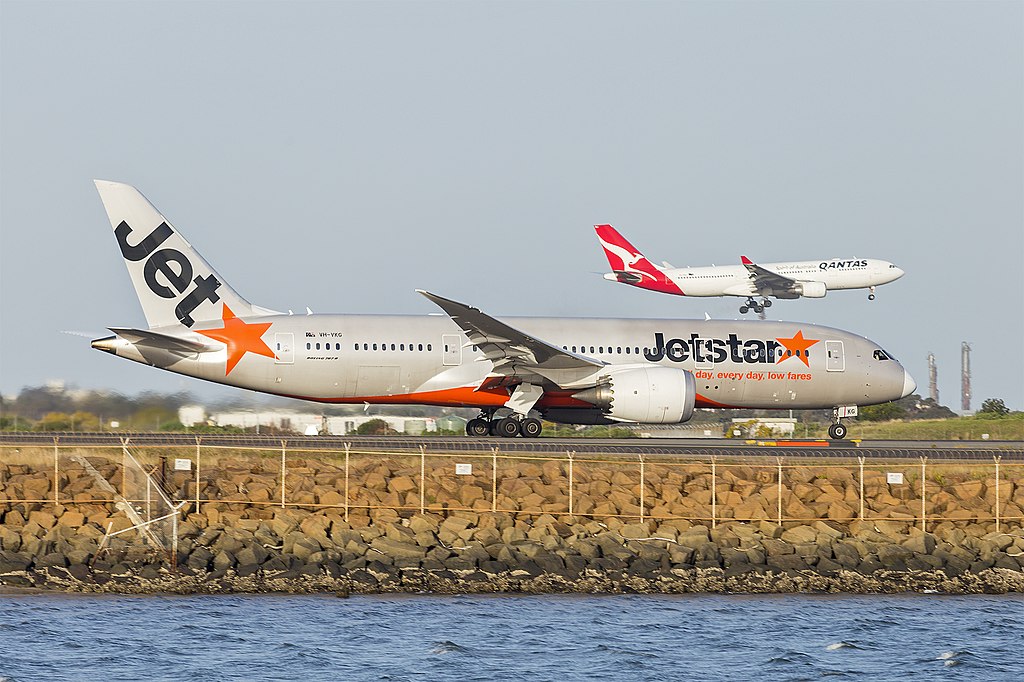Airlines
Qantas, Jetstar sign up as first airlines to fly out of Western Sydney airport

- Qantas and Jetstar first airlines to sign up to Sydney’s new airport
- Up to 15 aircraft and 700 jobs in the region
- Airport on track to open in late 2026
- Both airlines and airport working to use sustainable fuels to power flights
A historic deal between the Qantas Group and Western Sydney International Airport will allow both Qantas and Jetstar to operate domestic flights from the new airport once it opens in late 2026.
Within the first year, the Qantas Group intends to fly domestic routes to cities like Melbourne, Brisbane, and the Gold Coast using up to 15 narrowbody aircraft (10 Jetstar and 5 Qantas).
Qantas and Jetstar Launch One Million Seat Sale(Opens in a new browser tab)
It is anticipated that these aircraft will operate more than 25,000 flights through WSI each year, carrying close to four million passengers. In the run-up to the first flights, local recruitment will take undertaken for the estimated 700 operational roles that will be required.
“Western Sydney International Airport has some big strategic advantages with no curfew, technology that allows aircraft to be turned around quickly and a next-generation baggage system.
With the criticality of Sustainable Aviation Fuel (SAF) to the future of the aviation industry, the airport and airlines have agreed to work together to develop projects in Western Sydney that can supply SAF to WSI which can be used to power flights. SAF helps to lower emissions by up to 80 per cent on a lifecycle basis compared to fossil fuels and is key to decarbonizing the aviation industry.
The airport and the Qantas Group are continuing discussions on international and freight operations at WSI. While WSI will be an airport serving all of Sydney, it is set to strongly benefit communities across Western Sydney. To date the project has spent more than $400 million with businesses based in the region. Half of the workforce bringing the airport to life are Western Sydney locals and almost a third are learning on the job, through apprenticeships, traineeships and other vocational training.

Airlines
Air India Rolls Out A350s for Delhi-New York JFK and Newark Routes

In a major development for North American travelers, Air India has announced the deployment of its state-of-the-art Airbus A350-900 aircraft on two key routes: Delhi to New York and Delhi to Newark.
The service on the Delhi-New York route will commence on November 1, 2024, while the Delhi-Newark route will see its inaugural flight on January 2, 2025.
The introduction of the air india a350 will bring significant enhancements to Air India’s offerings, particularly with the launch of its Premium Economy class. air india retrofit This new class will feature 24 wide seats arranged in a 2-4-2 configuration, providing passengers with extra legroom and a more comfortable flying experience.
Soon, Air India aircraft will feature onboard WiFi & all-new cabins: Click here
“We are encouraged by the positive guest feedback we have received from the domestic deployment of our air india a350 interior to offer our hero product on the Delhi-New York JFK and Delhi-Newark routes. This is a significant leap forward for our U.S. operations that also underscores our commitment to continuous improvement,” said Campbell Wilson, Chief Executive Officer & Managing Director of Air India.
The A350’s Business class will set new standards with 28 private suites, each equipped with full-flat beds, direct aisle access, and personal wardrobes. Economy class will be configured to accommodate 264 passengers in a 3-4-3 layout. Across all cabins, passengers will enjoy the latest Panasonic eX3 in-flight entertainment system, offering over 2,200 hours of content.
Air India’s First A350-900: Interior, Routes, &Inflight Features: Click here
This strategic deployment marks a notable enhancement in Air India’s U.S. operations, with 60% of its flights to the U.S. now featuring new or upgraded cabin interiors. The air india new international routes currently operates 51 weekly flights to five U.S. destinations: New York JFK, Newark, Washington DC, Chicago, and San Francisco.
The revamped cabins, advanced in-flight entertainment systems, and improved service standards represent air india wifi commitment to providing a superior travel experience. “We believe this enhanced offering will solidify Air India’s position as a leading carrier and attract travellers seeking a world-class flying experience between India and the United States,” the airline stated.
Seats on these flights are now available for booking on Air India’s website, mobile app, and through travel agents, ensuring that passengers can easily plan their journeys on these newly upgraded routes.
Air India Economy vs Qatar airways economy: which is best?:Click here
-

 Travel1 week ago
Travel1 week agoAir India to Expand US Operations with Three New Routes After a Decade
-

 Travel2 weeks ago
Travel2 weeks agoWhy We Should Avoid These Stamps in a Passport
-

 Airlines1 month ago
Airlines1 month agoInvestigations Reveal Fake Chinese Titanium in Boeing and Airbus Jets
-

 Tech4 weeks ago
Tech4 weeks agoChina’s CATL Plans 1,800-Mile Electric Plane Launch by 2027
-

 Airport3 days ago
Airport3 days agoTop 10 Largest Airports in the World by Size
-

 Aerospace4 weeks ago
Aerospace4 weeks agoChina’s Fighter Jets Turn Wings into Autonomous Drones
-

 Airlines4 days ago
Airlines4 days agoAir India Rolls Out A350s for Delhi-New York JFK and Newark Routes
-

 Defence3 weeks ago
Defence3 weeks agoBoeing Enhances Chinook with New Engines and Block II Upgrades at $96 Million







